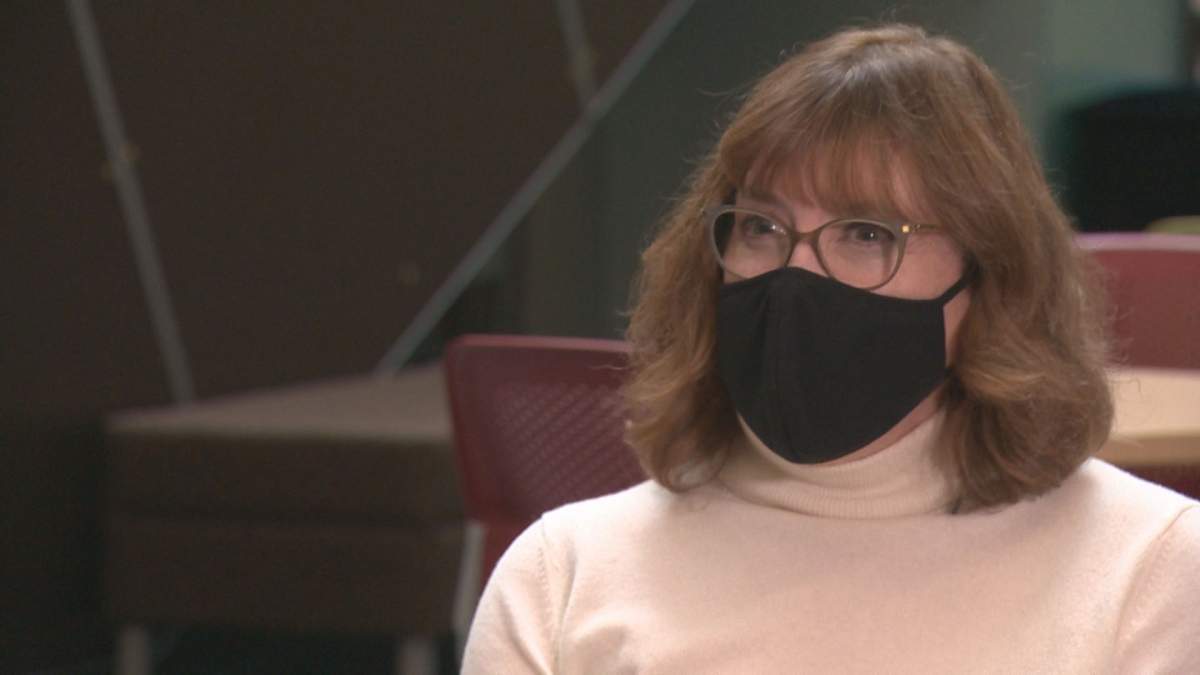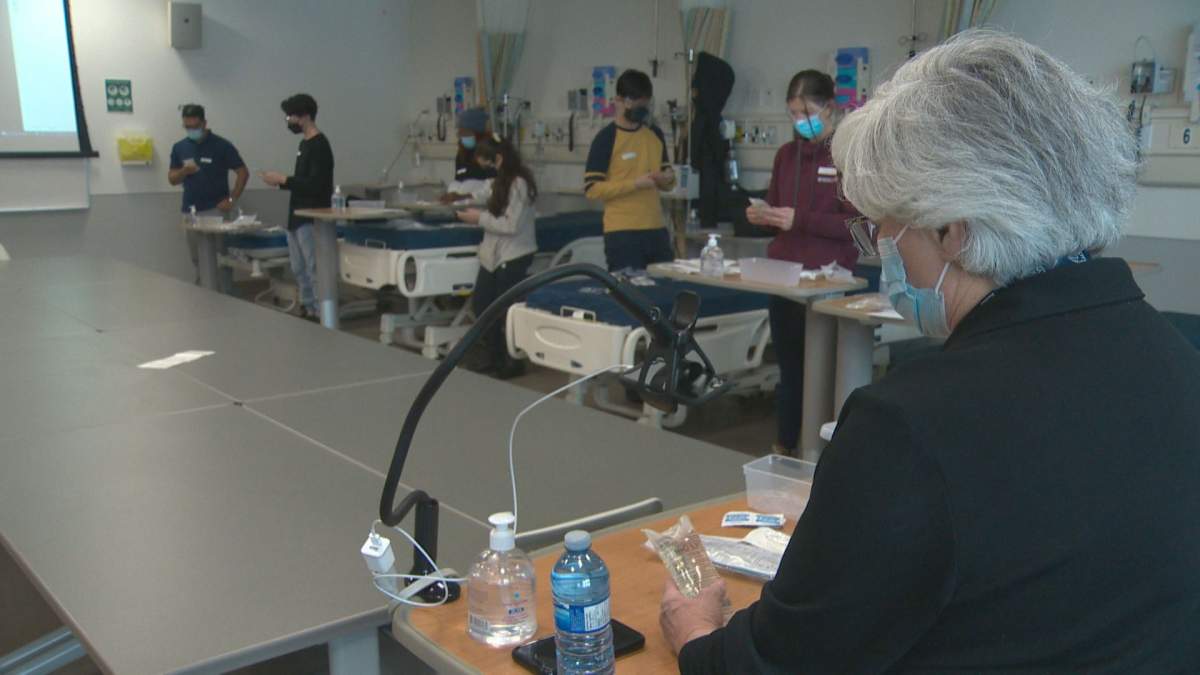Camille Gaida had already spent a decade in health care. She was an aid for dementia patients at an Edmonton care home and loved her job. Earlier in the pandemic, it hit her. She wanted to be a nurse.

“I think after a few months I just realized I really like doing that. It gives me a purpose and I want a bigger role,” said Gaida.
She’d heard the hospital horror stories and tales of burnout in the media but wasn’t deterred. Gaida is now enrolled in the University of Alberta’s Nursing After Degree Program that condenses four years of learning into two.
“I haven’t done my first injection yet, but I’m very excited,” she said.
It just so happens, Alberta needs an injection of nurses.
Several of the province’s most popular Registered Nursing (RN) programs, including University of Calgary and University of Lethbridge, shared data with Global News that shows applications for fall 2022 are either currently higher or projected to be higher than recent years.
The University of Alberta said applications to its undergraduate nursing program were up 17 per cent over last year.
“I was initially surprised but my understanding is this is a trend across Canada,” said Dr. Diane Kunyk, the U of A’s acting dean of Nursing.
It’s encouraging news, especially considering the timing of the Alberta government’s plan to expand health-care capacity and provide a more “sustainable” system. The Alberta government has pledged $5 million to recruit more nurses.
Kunyk said the province recently inquired about the faculty’s ability to increase the capacity of its nursing program. The motivation of the inquiry was obvious, she said.
“It’s anticipated there will be a shortage of nurses,” said Kunyk. “When the pandemic settles a bit, there are a number of nurses who haven’t taken any vacation. Nurses are also an aging workforce and we know that. There’s a lot more at my end than at the beginning end.”
According to Statistics Canada, the country has added more than 10,000 nursing vacancies during the pandemic, an increase of 75 per cent.
The increase was greater in Alberta. In Q1 of 2020, Alberta had 210 professional nursing vacancies. By Q3 of 2021, the number of vacancies had increased to 805, a jump of 283 per cent.

Get weekly health news
As of Feb. 25, Alberta Health Services (AHS) said there were 929 postings for registered nurse positions across Alberta, a number AHS said “aligns with what we have seen throughout the last year of the pandemic.” As of Feb 25,
AHS said it has filled more than 2,000 vacancies for RNs during the pandemic, most related to the COVID-19 response, and boasts that it pays nurses among the highest rates in Canada.
The Canadian Association of Schools of Nursing (CASN) suggests the vacancies are being created in part by new graduates who leave the profession shortly into their careers due to “unsustainable conditions compounded by the pandemic” and “increasing demands on new graduates.”
“Many registered nurses feel forced to leave the profession because of its emotional demands,” read a CASN statement to Global News.
‘Huge deficit’ of instructors
The problem with graduating more nurses isn’t a lack of students, but rather, a lack of PhD-prepared nurses qualified to design and teach the curriculum.
A CASN survey published in December 2021 projected Canada’s post-secondary schools needed to hire 287 full-time faculty in 2021, including 39 in Alberta. In 2020, 62 RNs graduated from doctoral programs and the previous five-year average is 56.
“So we have this deficit of (PhD) prepared nurses to run the programs,” said Kunyk. “One of the challenges is for nurses to step out and do a four-year doctoral program. They’re losing their salary while going to university.”
In a statement to Global News, AHS said employees can apply for a leave of absence to pursue studies or choose to work part-time or casual shifts.
In 2020, Alberta was unable to fill six RN faculty positions.
The same CASN survey found 52 per cent of RN faculty in Canada are aged 50 and up. Nearly 20 per cent are 60+ and approaching or already eligible for retirement.
Masters students, which graduate in far greater numbers annually, can also be hired as instructors but universities generally prefer faculty members have a PhD.
Lack of clinical placements
Another issue is clinical placements. Opportunities in urban hospitals are at a premium because all RN programs are competing and students generally want to be placed in the bigger urban hospitals, according to Kunyk.
During the pandemic, not only have spaces been difficult to find, the staff being shadowed have been too busy — especially at the heights of COVID-19 waves — to dedicate time to proper mentorship.
Kunyk said the U of A is exploring options and suggested there may be opportunities in rural communities but noted students have to be interested.
“(The talk is) always about how many new people can we get in, but there’s more than that that is needed out there,” said Kunyk.
Gaida wasn’t very receptive to the idea of a rural clinical placement. After all, she’s currently shadowing nurses at Edmonton’s Royal Alexandra Hospital two days a week. It’s busy and she loves it.
But Gaida said she has also been warned about what she’s getting herself into.
“I have heard from my peers that leaving Alberta does make sense, at least for a little bit, so I guess we’ll see,” said Gaida.
Her goal is to start her career in Alberta and work on the frontline.
Based on the current state of nursing, she’ll have every opportunity.




Comments